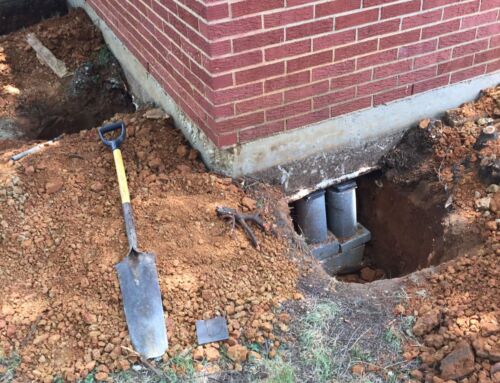Voids beneath concrete slabs can pose a significant threat to the stability of your home, driveway, or patio. These gaps often result from soil erosion, improper compaction during construction, or water drainage issues. Left unaddressed, voids can lead to cracking, sinking, and structural instability. Filling a void under a concrete slab is essential to restore its strength and prevent further damage.
Identifying a Void Under a Concrete Slab
Before you can address the problem, it’s important to confirm that a void exists beneath the slab. Common signs include uneven surfaces, cracks in the concrete, or areas that sound hollow when tapped. You might also notice pooling water around the slab, indicating soil erosion. These issues often require professional inspection to determine the size and location of the void.
Methods for Filling a Void Under a Concrete Slab
Slab Jacking (Mudjacking)
Slab jacking, also known as mudjacking, is a common method for filling voids under concrete slabs. This process involves drilling small holes into the slab and pumping a mixture of cement, sand, and water underneath.
The mixture fills the void and raises the slab back to its original position. Slab jacking is cost-effective and works well for minor settling or small voids. However, it’s not always suitable for larger voids or slabs in areas with extensive water issues.

Polyurethane Foam Injection
Polyurethane foam injection is a modern and highly effective method for filling voids. This technique involves injecting an expanding foam into the void. The foam hardens quickly, providing support and stabilizing the slab.
Polyurethane foam is lightweight, waterproof, and minimally invasive. It’s an excellent solution for large voids or areas with significant water exposure, as it resists erosion. While slightly more expensive than slab jacking, it offers long-term stability and durability.
Grouting
Grouting involves pumping a cementitious grout mixture into the void. This method is similar to slab jacking but typically uses a denser material that provides added stability. Grouting is often used in industrial settings or for heavily loaded slabs.
Soil Compaction or Replacement
In cases where the void is caused by improper soil compaction, it may be necessary to excavate the area and replace or compact the soil. This approach involves removing the slab, addressing the underlying soil, and reinstalling the concrete. While labor-intensive, this method ensures the problem doesn’t recur.
Steps for DIY Void Filling
For small voids under walkways, patios, or light-use slabs, you may be able to fill the void yourself using simple materials like expandable foam or sand.
- Assess the Void: Confirm the size and location of the void. Use a hammer or metal rod to locate hollow spots.
- Choose Your Material: For small voids, you can use ready-mix concrete, sand, or expandable foam products designed for concrete repair.
- Drill Access Points: Drill small holes into the slab above the void, spaced evenly for even filling.
- Inject or Pour Material: Use a pump or funnel to inject the material into the void. For expandable foam, follow the manufacturer’s instructions for application.
- Allow Time to Set: Let the material cure completely before using the slab. This can take anywhere from a few hours to a few days, depending on the material.
When to Call a Professional
While minor voids can sometimes be addressed with DIY solutions, larger voids or those affecting structural slabs should always be handled by professionals. A professional foundation repair company can evaluate the underlying cause of the void, recommend the best solution, and ensure long-term stability.
If you’re noticing uneven concrete or suspect a void under your slab, Discount Foundation Repair Specialists can help. We serve Arlington, Fort Worth, and Grapevine with expert foundation repair and slab stabilization services to protect your property from further damage. Contact us today to schedule an inspection and keep your home safe and secure.





